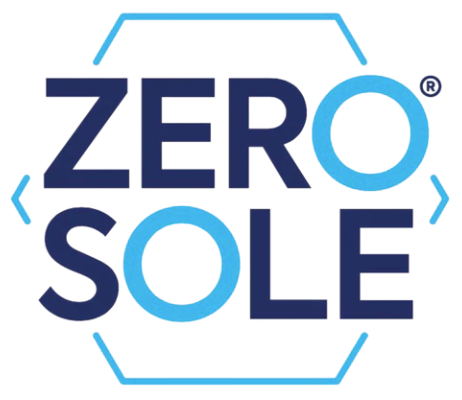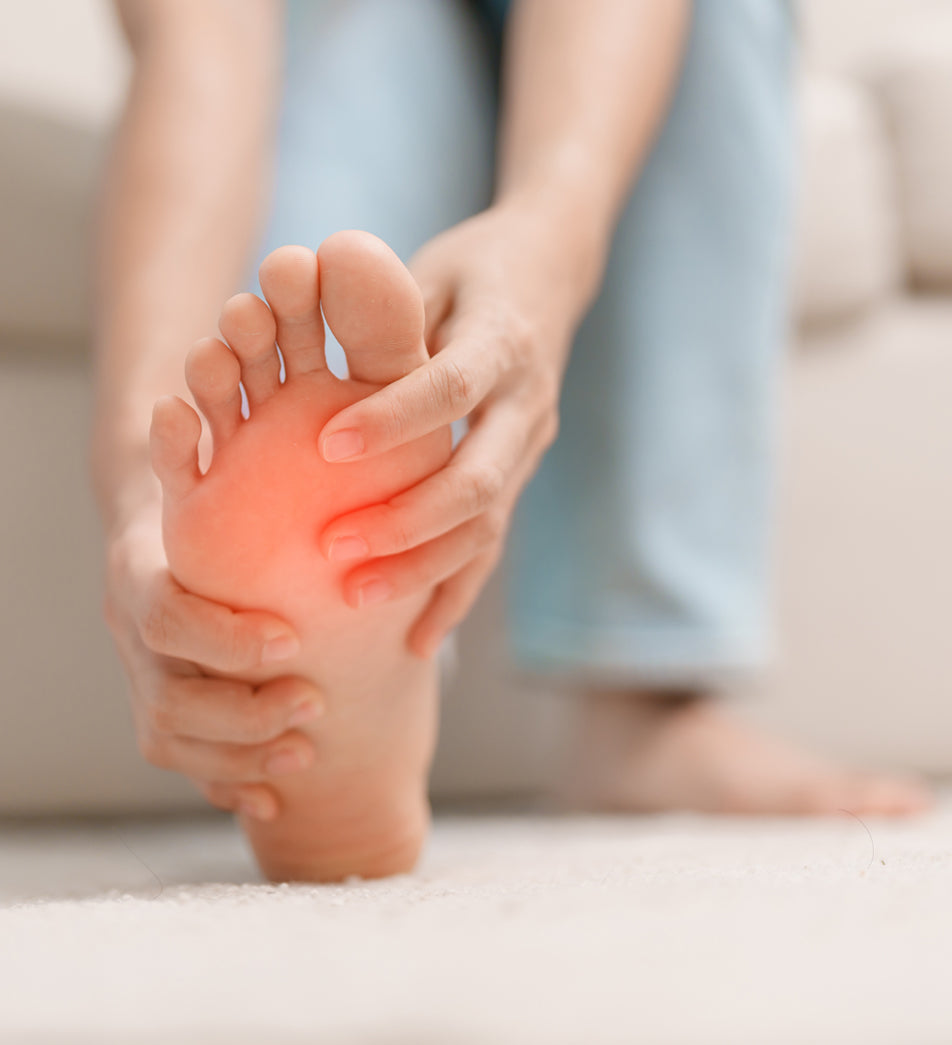1. What are foot pressure points—and why they matter
Foot pressure points are areas on the feet where concentrated force accumulates. Pressure —especially when uneven or excessive, is a key driver behind many foot issues like corns and calluses, heel pain (e.g. plantar fasciitis), and ball of foot pain (metatarsalgia). Understanding where and how pressure distributes through your feet is essential for treating the cause of many different foot pain conditions, and maintaining healthy mobility.
2. Common pressure-point problems
-
Corns & calluses
Thick, protective layers of skin that develop due to repeated friction and pressure. Usually harmless but uncomfortable (sometimes very painful). Corns and calluses can only be successfully treated once the source of pressure and friction is removed. -
Hot spots
Small, painful areas from localised pressure—often due to ill-fitting footwear, repetitive motion or prolonged standing, or foot deformities – such as a prominent joint such as a bunion, or under the ball of the foot. -
Heel pain
Overpressure and micro-tears in the plantar fascia (the fibrous tissue running from heel to toes) can lead to plantar fasciitis—a leading cause of heel pain. Heel spurs can develop alongside plantar fasciitis, if the condition has been present for some time. Pressure can further aggravate heel pain during plantar fasciitis flare-ups, or if you have diminished padding (fat pad atrophy) under the heel. -
Metatarsalgia
Pain and inflammation in the ball of the foot (especially beneath the metatarsal heads). Often tied to increased pressure or unsupportive, narrow footwear.
3. How pressure affects foot health and mobility
Every step places stress on the foot's bones, joints, soft tissues, and nerves. When certain areas absorb too much load, or when foot structure forces pressure to accumulate more in certain areas, this imbalance can cause inflammation, strain, and nerve compression.
- Foot health impact: If pressure points aren’t well managed, not only does this contribute to long-term foot pain, it can lead to more serious health issues. For example, if you have diabetes, peripheral vascular disease or rheumatoid arthritis, common pressure conditions such as corns and calluses can progress into chronic wounds (known as foot ulcers). From my own clinical experience, foot ulcers can be very challenging to treat. It’s so important to prevent this serious complication from arising in the first instance.
- Mobility impact: Persistent foot pain often leads to altered gait (walking) patterns, favouring other muscles and joints. In clinic I often describe this as ‘over compensatory’ pain, which often impacts the ankles, knees, hips, or lower back. Managing the initial foot problem early on is important to avoid developing new injuries as a result of overcompensation – it’s much more challenging to treat foot pain when there are multiple structures aggravated at the same time!
4. Professional insights from podiatrists
- Expert warning: Myself and my podiatry colleagues always caution that you should never leave corns, calluses or pressure injuries untreated if you have diabetes, peripheral vascular disease or rheumatoid arthritis. Always seek professional advice if you notice a new foot concern to avoid any serious complications, such as foot ulcers, from developing.
- Repetitive stress matters: Repetitive, high impact activities like long-distance running (particularly on concrete!) dramatically increases pressure through the forefoot and heel, contributing to conditions like plantar fasciitis, tendonitis and ball of foot pain. Try mixing your activities up every so often, such as swapping high impact exercises to lower impact alternatives like swimming and cycling, particularly if you are already noticing signs of foot aches and pains. Also ensure you keep your feet well supported during exercise, with structured, cushioned footwear to help absorb some of the additional impact.
- Preventative care is key: Try to avoid prolonged wear of thin, unsupportive footwear – particularly those which lack cushioning, such as ballet pumps, wellington boots, brogues and flip flops. Without adequate cushioning and support, your feet will be absorbing more of the ground’s impact, contributing to pressure pain. Ensure your feet are functioning at their best to avoid overloading weaker or stiffer structures – regularly stretch out your calf muscles and practice basic foot strengthening exercises.
5. When to seek professional help vs. self-treatment
Self-care you can try at home:
- Footwear & insoles: Opt for shoes offering arch support and cushioning. Pressure-relieving insoles like ZeroSole will further reduce pressure and pain from painful pressure points. Customise ZeroSole by removing the plugs directly beneath the pain point – see our blog on What foot conditions ZeroSole insoles can treat to learn more.
- Stretching & Strengthening: Regular calf stretching along with foot-strengthening exercises, can reduce strain and improve mobility.
- Rest & Ice: Allow time for overused areas to heal, and soothe inflamed regions with ice and gentle pressure relief.
When to consult a professional:
- Persistent pain: If pain persists beyond a week, worsens, or limits daily activity, it’s time to see a podiatrist.
- Severe or sudden symptoms: Sharp, stabbing pain, nerve-like burning, or numbness suggest deeper issues that require medical/podiatry attention.
- Chronic or high-risk cases: If you have diabetes, peripheral vascular disease or rheumatoid arthritis, always consult with a medical professional (eg podiatrist) if you develop new foot pain.

